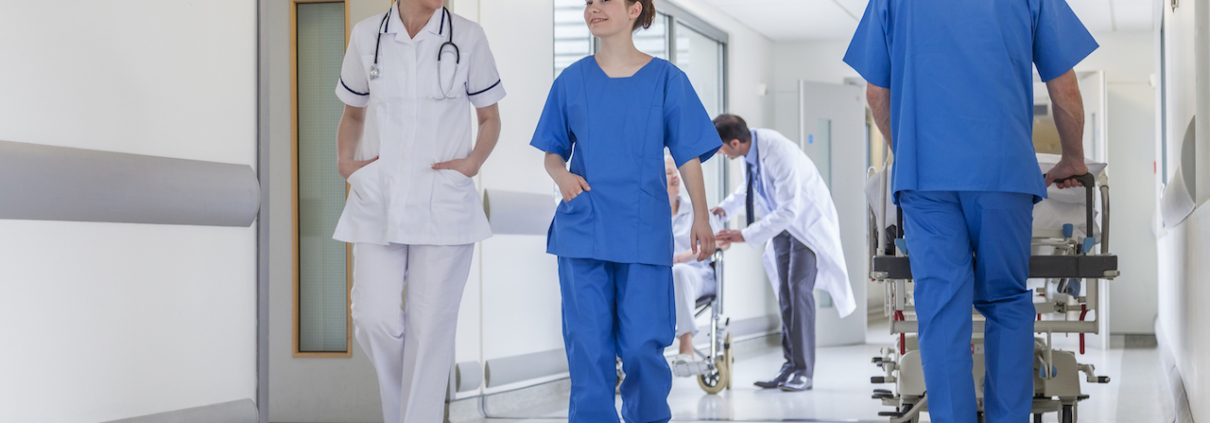25% of Hospitals in Dangerously High Levels of Air Pollution Areas
The World Health Organisation (WHO) advises a maximum concentration of fine particulate matter (PM2.5) of 10μg/m3 for the annual average. Fine particulate matter is a hazardous air pollutant. So when concentrations exceed the WHO’s recommended limits, it represents a major public health concern.
25% of Hospitals in Dangerously High Levels of Air Pollution Areas
Unfortunately, a recent report revealed that far too many UK hospitals are situated in areas with dangerously high levels of air pollution. The report, Toxic Air at the Door of the NHS, found that over 2,000 UK health centres are located in areas where the atmospheric concentration of PM2.5 exceeds the WHO’s recommended limits.
According to the report, 248 UK hospitals are located in highly polluted areas. This accounts for around 25% of all hospitals in the UK.
Want to know whether your local hospital’s in an affected area? Check our guide to the best and worst areas in the UK for air pollution.
The Risks of Fine Particulate Matter
What is Fine Particulate Matter?
When we talk about “fine particulate matter”, we’re referring to a huge variety of chemical compounds and materials that are less than 2.4 micrometres in diameter. Some of them are natural and organic. Others are man-made, and some are toxic.
Why is Fine Particulate Matter Harmful?
When a person inhales fine particulate matter, because the particles are so small, they can enter the bloodstream. And once these particles are in the bloodstream, they may make their way to the lungs, brain, heart, and other organs.
As a result, even short-term exposure to PM2.5 can aggravate existing conditions, including asthma and allergies. But long-term exposure can lead to the development of serious conditions including heart disease, strokes, and lung cancer.
The Effect of Pollution on Hospitals
Every single day, hundreds of people spend extended periods of time in hospitals. Staff at all levels work long shifts. For patients, even a short-term visit can last hours. And long-term patients will also invite visitors, who may themselves spend hours onsite.
So if the hospital’s located in an area with high levels of air pollution, every day hundreds and hundreds of people will be exposed to dangerously high levels of toxic particles.
For the staff, who spend longer than anyone else onsite, this could lead to a variety of serious health problems in the long-term. For patients, many of whom are already in a vulnerable condition, air pollution could aggravate existing symptoms, or even give them new health risks to contend with.
And for visitors, who might show up to the hospital feeling perfectly well, onsite air pollution could ensure they leave feeling significantly worse.
Besides endangering staff, patients and visitors, air pollution also gives hospitals plenty of other problems in both the short- and the long-term. According to one study, up to 20,200 respiratory and cardiovascular hospital admissions each year can be linked to air pollution.
At a time when NHS waiting lists are posing a serious concern, anything that can add to patient waiting times must be viewed as a major issue that requires our immediate attention.
Which Areas of the Hospital Are Most at Risk From Air Pollution?
When it comes to air pollution, some hospitals will have more to worry about than others – for example, inner-city hospitals, and any health centre located near a major road.
But for all hospitals, the most at-risk areas will be:
- Any location frequented by members of the public, including receptions and waiting rooms.
- Areas where the most vulnerable patients stay, including wards and communal spaces, such as gardens.
- Any part of the hospital used by children and young people.
- Any room of the hospital with a window facing a road.
What Can Hospitals Do To Reduce the Risks of Air Pollution?
The Asthma and Lung UK charity recently made a few suggestions for initiatives that could help address the high levels of air pollution around UK hospitals:
- The UK government should enshrine the WHO’s recommended PM2.5 limits into law.
- There should be more Clean Air Zones in towns and cities across the UK, where traffic flow is controlled to reduce air pollution. Read our full guide to the link between speed limits and air pollution.
- Hospitals could start air quality monitoring schemes in places where their most vulnerable patients congregate.
How to Get Cleaner Air in Your Hospital Today
A high quality air filtration system can help you significantly improve the air quality in your hospital – and quickly.
Our Blueair HealthProtectTM air purifiers are fitted with advanced HEPASilent technology. This is capable of catching 99.97% of particles down to 0.1 microns, which includes PM2.5 fine air particles. But at the same time, they’ll capture many other hazardous and toxic air pollutants. And crucially for a hospital, they can also capture and kill 99% of viruses and bacteria.
Take a look at our specialist air purification systems for hospitals.



